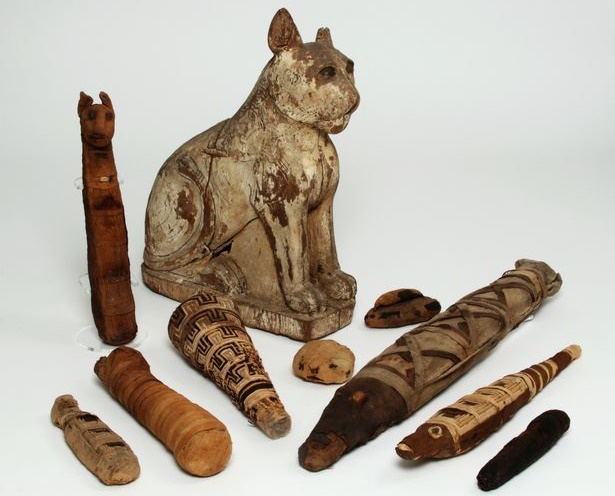This fascinating exhibition will present and explore ancient Egyptian animal mummies, prepared in their millions as votive offerings to the gods. Gifts for the Gods will explain the background behind this religious practice in the context of life in ancient Egypt and the environment in which the animals lived. It will explore the British fascination with Egypt, the discovery of animal mummies by British excavators, and how the mummies ended up in the UK, as well as taking a look at the history and future of their scientific study in Manchester. The display will combine mummified specimens such as jackals, crocodiles, cats and birds with cultural artefacts such as stone sculpture and bronze statuettes, alongside 19th Century works of art and never-seen-before archives.

The exhibition will include a recreation of a subterranean animal catacomb, creating an immersive and atmospheric experience for the visitor with a dark, narrow room lined with pots containing votive animal mummies, centred on a focal point for worship.
The British were fascinated by a ‘romantic’ concept of ancient Egypt, highlighted in the exhibition by 19th Century paintings of how animal mummies were perceived by British Victorians. They were intrigued by the mysteries of the animal mummies; alongside the pyramids of Giza, one of the main tourist attractions in Egypt during the 18th and 19th centuries was the ‘Tombs of the Birds’, a catacomb at the site of Saqqara, subsequently lost and only re-identified in the 1960s by a British team.
Photographs, archive material and travel journals will show how the animal mummies were excavated and selected by archaeologists and museum experts, including how they were collected and distributed as curios and souvenirs. The study of animal mummies is a relatively new field of research, and more recent excavations are featured, in particular at Saqqara.

The Ancient Egyptian Animal Bio Bank Project based at the University of Manchester, and conducted by Dr. Stephanie Atherton-Woolham and Dr Lidija McKnight aims to catalogue consistent data from animal mummies in museum collections outside Egypt. Currently, this includes over 800 individual animal mummies from collections in Britain, Europe and the United States.
The exhibition will open at Manchester Museum (October 2015-April 2016) before being displayed at Kelvingrove Art Gallery and Museum, Glasgow (May-September 2016) and World Museum, Liverpool (October 2016-March 2017).
Dr Lidija McKnight, Research Associate, the Ancient Egyptian Bio Bank Project said, “This exhibition will showcase the role played by the British in the discovery, excavation, collection, curation and scientific research of this understudied subject. The University of Manchester, with its long history in Egyptian mummy research, is leading the field; helping to shed light on the material remains of this ancient practice and, hopefully, to reveal more about how and why these animal mummies were produced.”
Dr Campbell Price, Curator of Egypt and Sudan, Manchester Museum said, “We are excited as this is the first exhibition on animal mummies to be held in the UK, and offers the chance to reunite mummified material from different archaeological sites for the first time in over a century. It will feature over 60 mummies, including many never before seen on public display. We are extremely pleased to be able to tour this Manchester-based exhibition to partner institutions. We expect the exhibition to be very popular at Manchester Museum, and look forward to enabling more visitors to share in this exciting subject.”
Source: The Manchester Museum [August 15, 2015]